📌 Project: Legends Reborn (Web3 Collectible Card Game)
👤 Role: Sr. Game Designer · UX Consultant · Web3 Strategist
🏢 Company: Kung Fu Factory (Los Angeles-based video game studio)
📆 Timeline: 2022
⚡ Focus: Web3 · Blockchain Gaming · Play-to-Earn (P2E) · Collectible Card Systems
🛠 Services: UX · User Research · Game Design · Crypto Economy
🎯 Impact: Audited and enhanced gameplay systems for Legends Reborn, a blockchain-powered collectible card game. Improved user flows, dialogue structures, and character/card abilities while refining UI for accessibility and immersion. Elevated the game to meet Web3 play-to-earn standards by integrating tokenomics, balance systems, and crypto-driven reward mechanics. Helped position the title as part of Gala Games’ push into the emerging P2E space.
Legends Reborn: Age of Chance
Legends Reborn: Age of Chance is an exciting 1v1 card battler where players build decks of cards and creatures to compete with others globally. This NFT game, hosted on the Gala Games platform, enables crypto transactions for purchases. These in-game purchases allow players to accrue in-game currency, which can later be converted to USD.
Visual indicators, such as hover damage cursors, directional attack cues, and color-coded displays for health, magic, and action points, along with prominent numbers, enhance gameplay interactions and make them more intuitive.
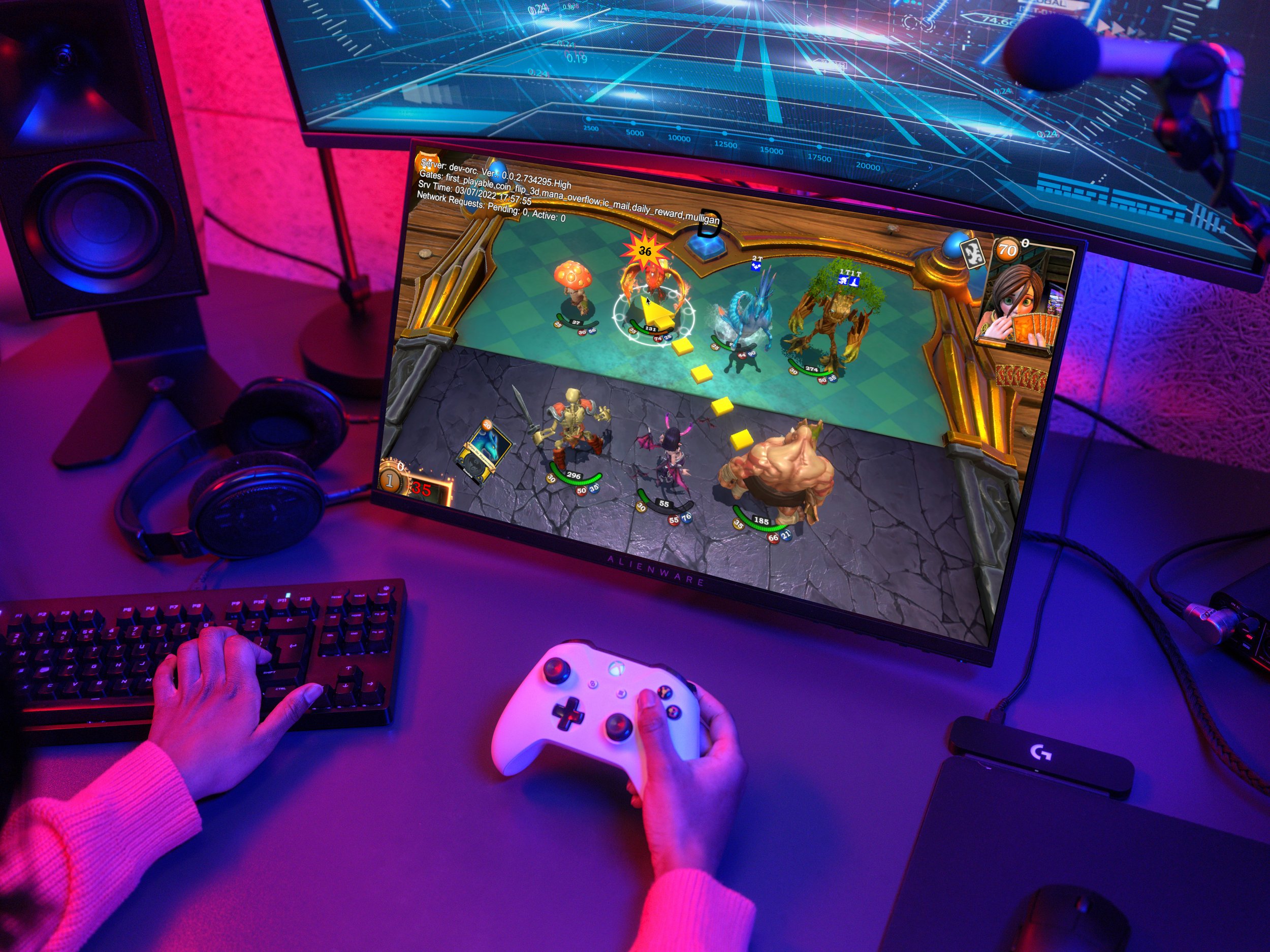
Legends Reborn already had strong playability, but it lacked confidence in storytelling. Integrating characters, creatures, and abilities into a CCG NFT game was a unique challenge. Multiple iterations were needed to design creature cards that clearly depicted health meters, abilities, and vulnerabilities using a visual symbols language. User testing was crucial in refining these elements. Below are several mid-fi wireframes, which were later enhanced by a UI artist to bring the game to life.
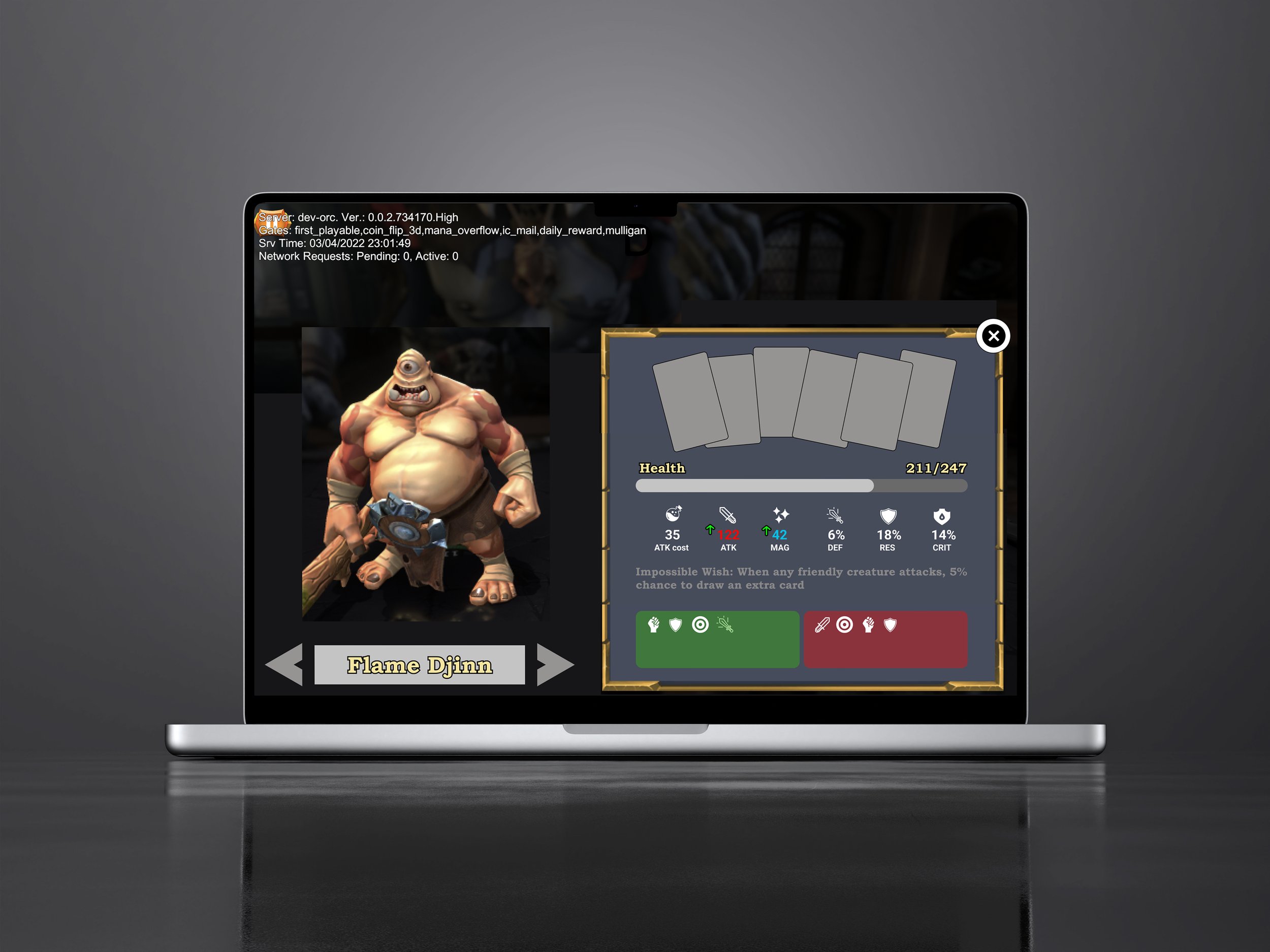
Mid-fi Wireframe 1: creature details
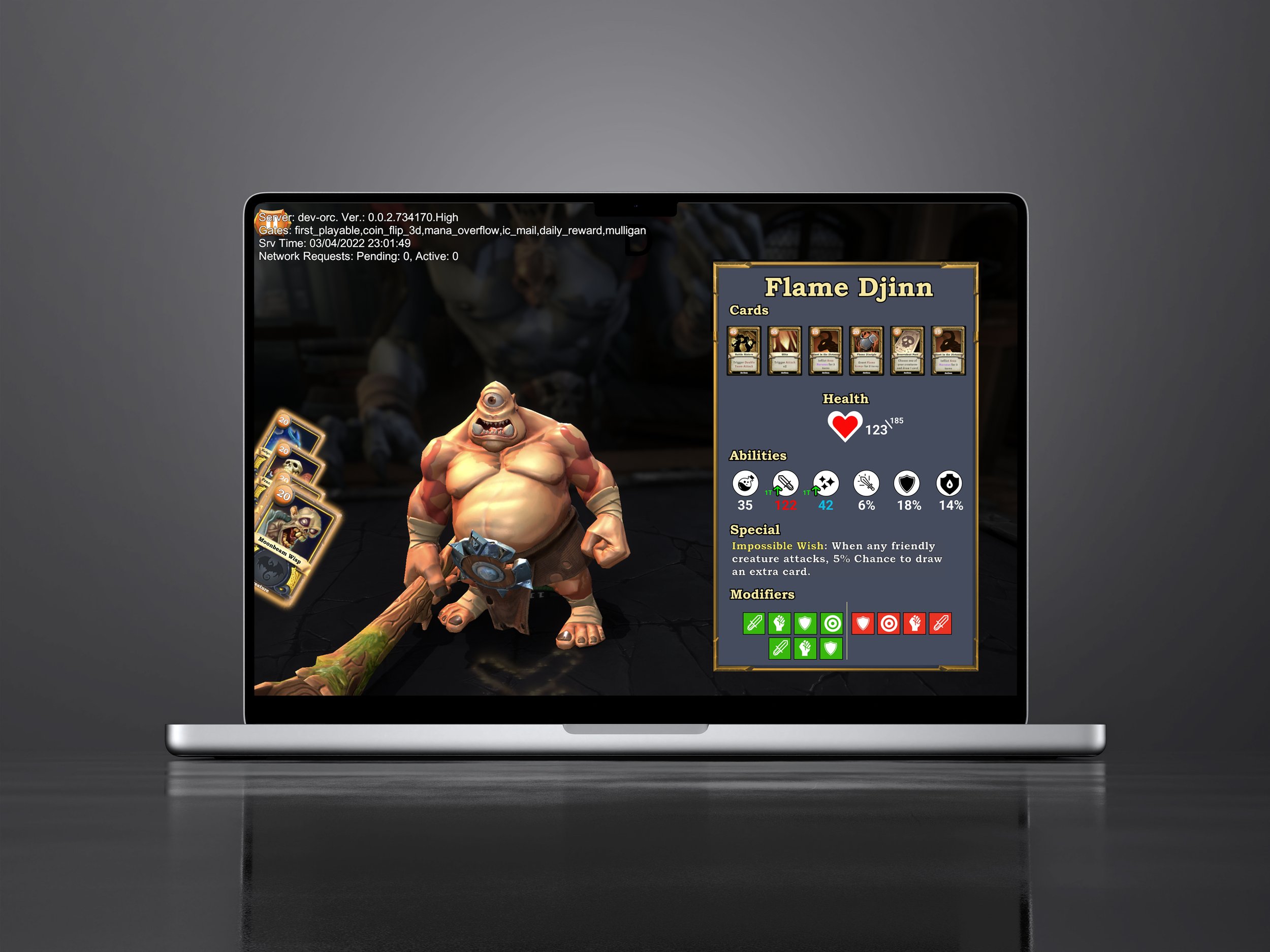
Mid-fi Wireframe 2: creature details
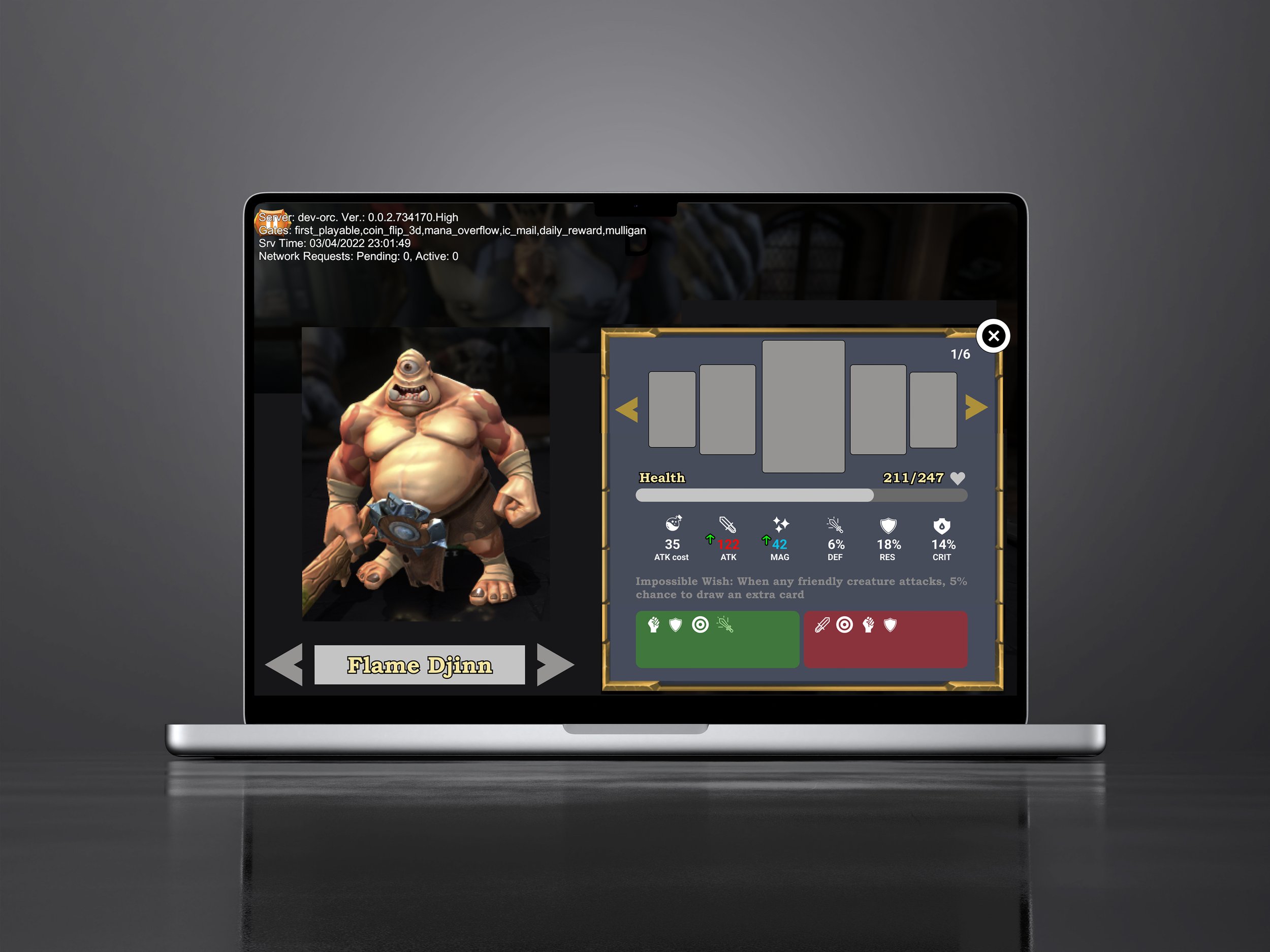
Mid-fi Wireframe 3: creature details
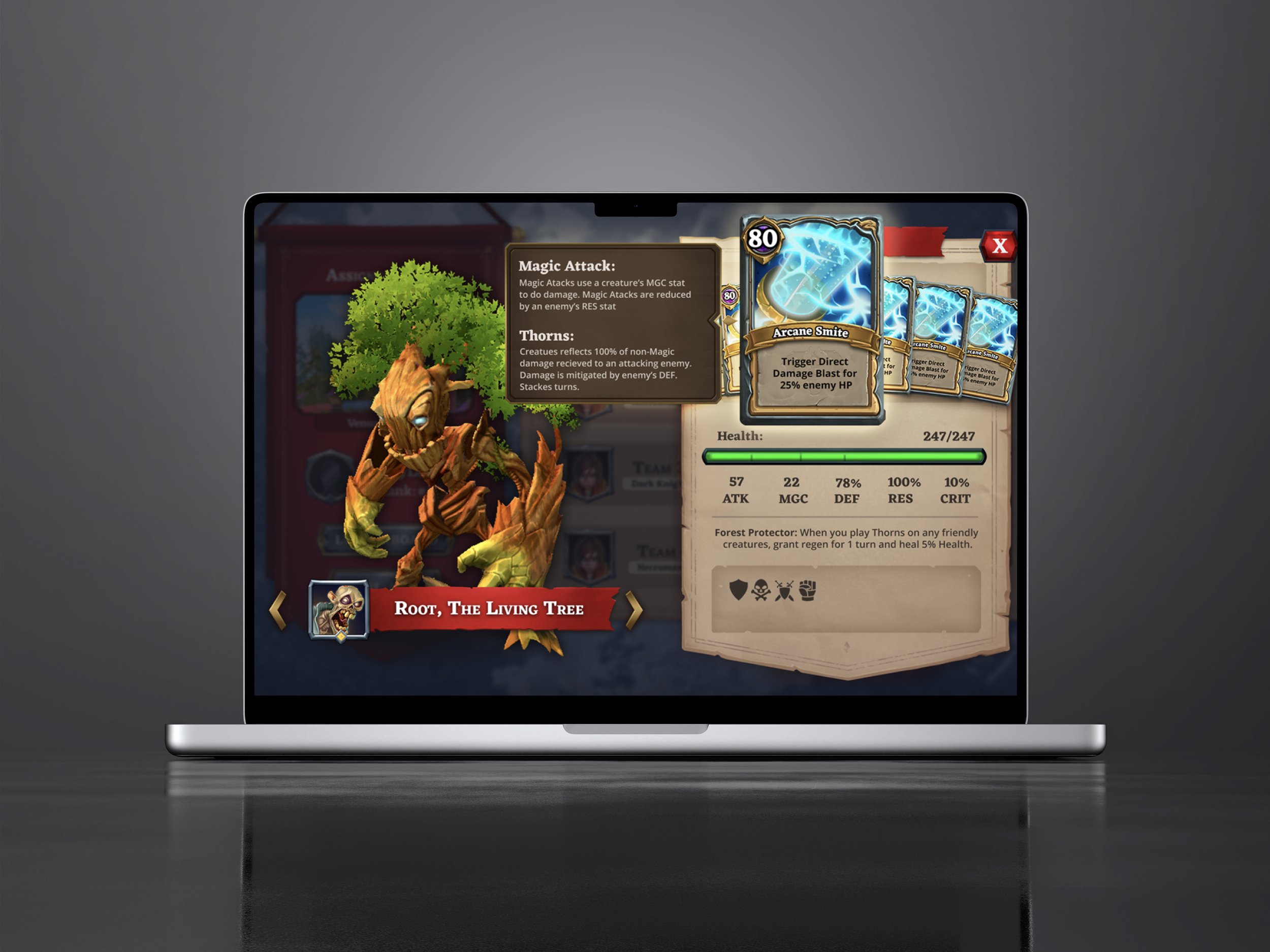
UI Artist Spec of UX Wireframe
When auditing any existing applications, it's crucial to understand the audience and implement intuitive updates that enhance gameplay through storytelling. At the start of this project, I tested the game for several days to grasp the difficulties players faced in integrating their NFTs into the game, managing decks, and understanding collectibility. By creating low-fi wireframes with realistic data, we could quickly reach solutions with stakeholders and project managers. This approach allowed for rapid visualization, helping clarify intentions, enhance existing features, and uncover new opportunities for improvement.

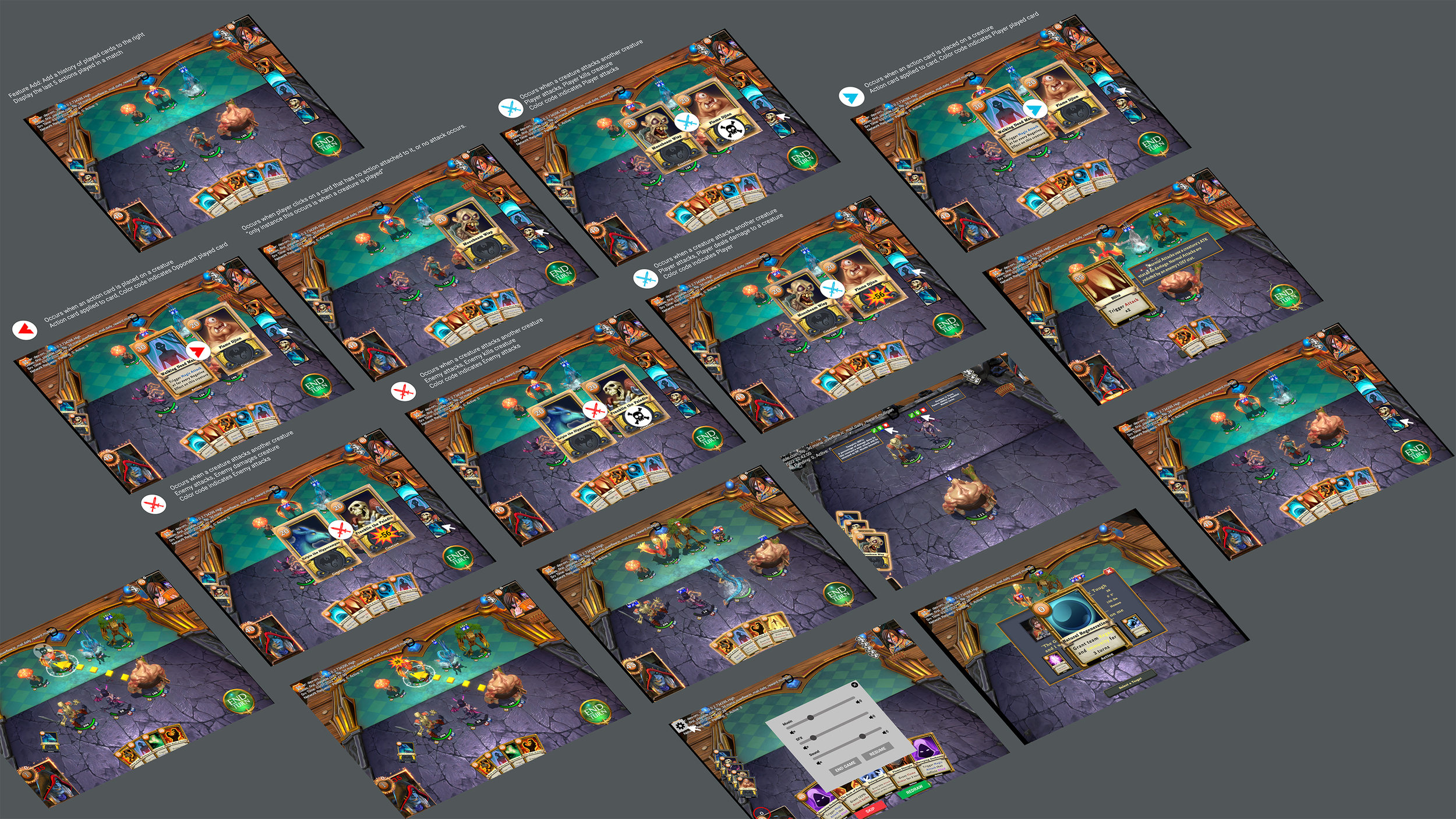
Site-auditing a game can be both enjoyable and tedious. In these frames, several conflicts in messaging how attacks, defense, and kills occur are evident. Adding a series of battle flow descriptive icons can enhance gameplay by providing visual cues that players can quickly learn through repeat play. Often, the best way to convey solutions to game artists is by adding placeholder graphics and annotating actions when a prototype isn't feasible. This approach allowed the game UI artist to rapidly elevate the game's visual flow and overall experience.


